Ongoing
Consumers worldwide are justifiably concerned with food animal welfare and seek to make purchasing decisions that result in improved rearing practices. A challenge in addressing this concern is the need to develop tools that quantify food animal behavior, the ultimate welfare indicator, rather than the simple environmental welfare indicators currently used, such as the living space afforded an animal.
The goal of this project is to develop an automated and continuous welfare assessment tool for broiler (meat) chickens using a system of mobile and stationary cameras. Our design approach is to incorporate vision software training with input from professional welfare assessors to produce an assessment system that solves the expense and labor shortages associated with current manual welfare assessments, but maintains the accuracy and integrity of manual assessments. Such an automated system works continuously with high reduction of labor hours for welfare assessment and reducing risk for disease transfer by humans. Further, the system design will incorporate a method to exercise broiler flocks to maintain leg health and encourage natural behavior, while simultaneously quantifying these parameters. The system output will be flock benchmark score for use by the farmer, food retailer, and ultimately the consumer. The impact of system development resides mainly in providing farmers, for the first time, with a tool to improve rearing practices that result in better animal welfare conditions. As well, the impact extends to the retailer and ultimately the consumer by providing a meaningful animal-based metric to help purchasing decisions that support improved rearing practices.
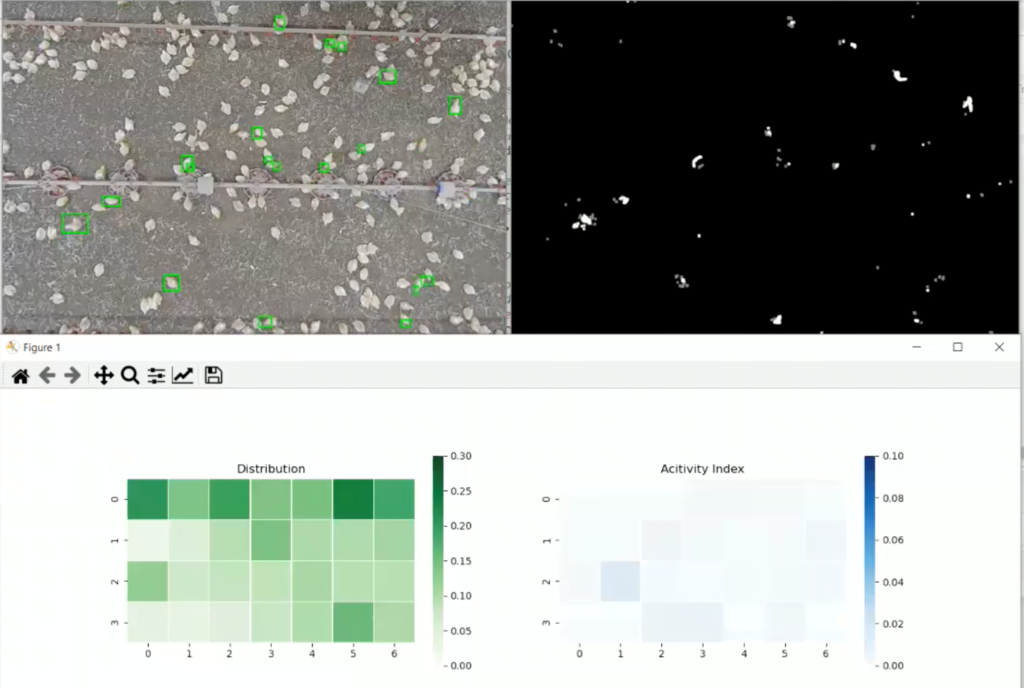
Funding Agency: Foundation of Food and Agriculture Research
Funding Amount: $513,214.32
Start and End Dates: 04/01/2020 – 04/01/2022
Lead PI:
Hao Gan, University of Tennessee
List of Co-PIs and Institution
- John Wilkerson, University of Tennessee
- Shawn Hawkins, University of Tennessee
- Maria Prado, University of Tennessee
- Hongwei Xin, University of Tennessee
- Yang Zhao, University of Tennessee
- Joseph Purswell, USDA-ARS Poultry Research UNIT
- Filip To, Mississippi State University
- Tom Tabler, Mississippi State University
- Prakash Patil, Mississippi State University
- Daniel Berckmans, BioRICS NV, Belgium
Routine cattle handling can impose stress on cattle and the human handlers. We aim to quantify this using commercially-available sensing technology. Animal heart rate, activity, and body temperature will be measured in real-time and analyzed during handling events. Human handlers will also be assessed using heart rate and activity monitoring devices. Ultimately, we aim to provide the beef industry with relevant data related to low-stress and conventional cattle handling.
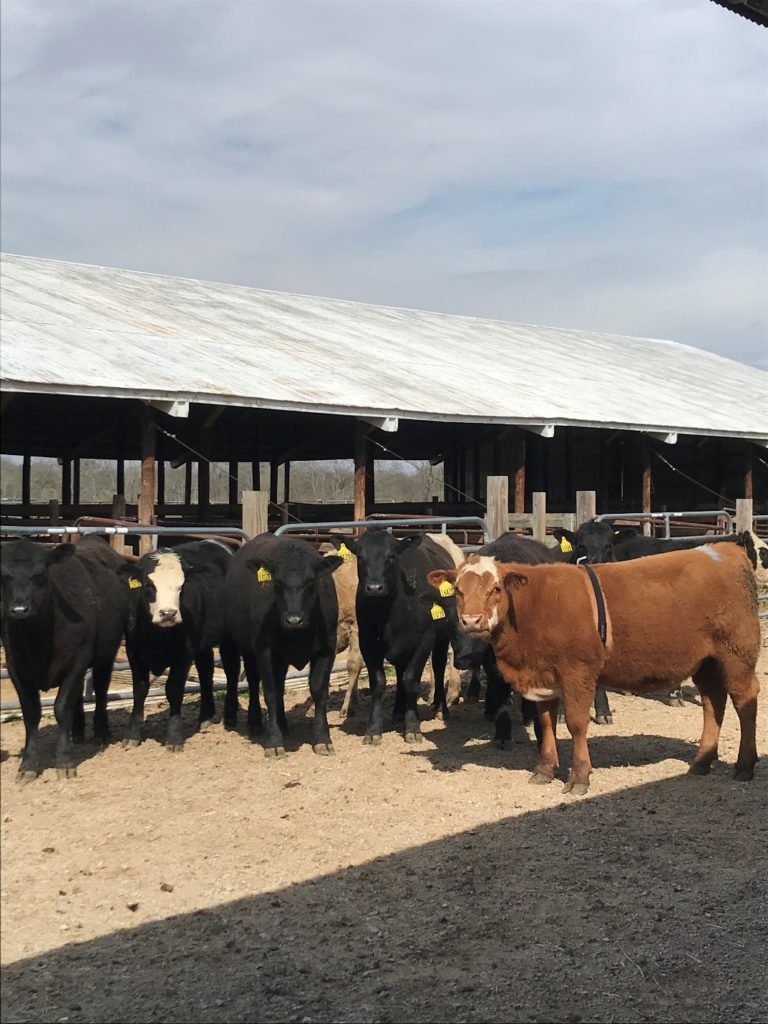
Funding Agency: Internal
Funding Amount: NA
Start and End Dates: 03/2021-current
Lead PI:
Liesel Schnieder
List of Co-PIs and Institution:
- Chris Boyer, University of Tennessee, Institute of Agriculture
- Hao Gan, University of Tennessee, Institute of Agriculture
As the largest compartment of the cattle stomach, the rumen and its microbiome are critical for the conversion of low-quality feedstuffs into usable energy for ruminants. Therefore, the ruminal microbes represent the greatest opportunity to rapidly improve beef cattle nutrition and growth for meeting future global protein demands. However, if certain microbes that are significant for feed efficiency, disease resistance, and other production traits are to be maintained, there is a critical need to identify host beef cattle genetics that establishes and influences the rumen microbiome and the potential heritability of these microbes. The overarching hypothesis of this project is that host beef cattle genetics are associated with the variation of microbes in the rumen, producing an individualized rumen microbiota among animals. To test the overarching hypothesis of this project and determine its impact on feed efficiency, the specific objectives include, 1) determine the microbes and microbial interactions in the rumen of Angus cattle and their relation to feed efficiency,2) estimate the heritability of the rumen microbes and microbial features, and 3) identify host genomic markers for rumen microbes and microbial features. We will use the GrowSafe for real-time feed intake data to acquire feed efficiency phenotypes. At the completion of this project, we expect to have identified heritable rumen microbes and microbial features that are important for feed efficient beef cattle. Although the study will foundationally define a host genomic link to heritable rumen microbes, this project will ultimately, a) provide a steppingstone toward microbiome manipulation and a means to increase food availability while lowering environmental impacts, b) develop more sustainable cow-calf production systems, and c) enhance Angus breeding programs, genomic predictions, and US agriculture. The project will dramatically advance the field of beef production agriculture to sustainably meet the protein requirements of an ever-increasing global population
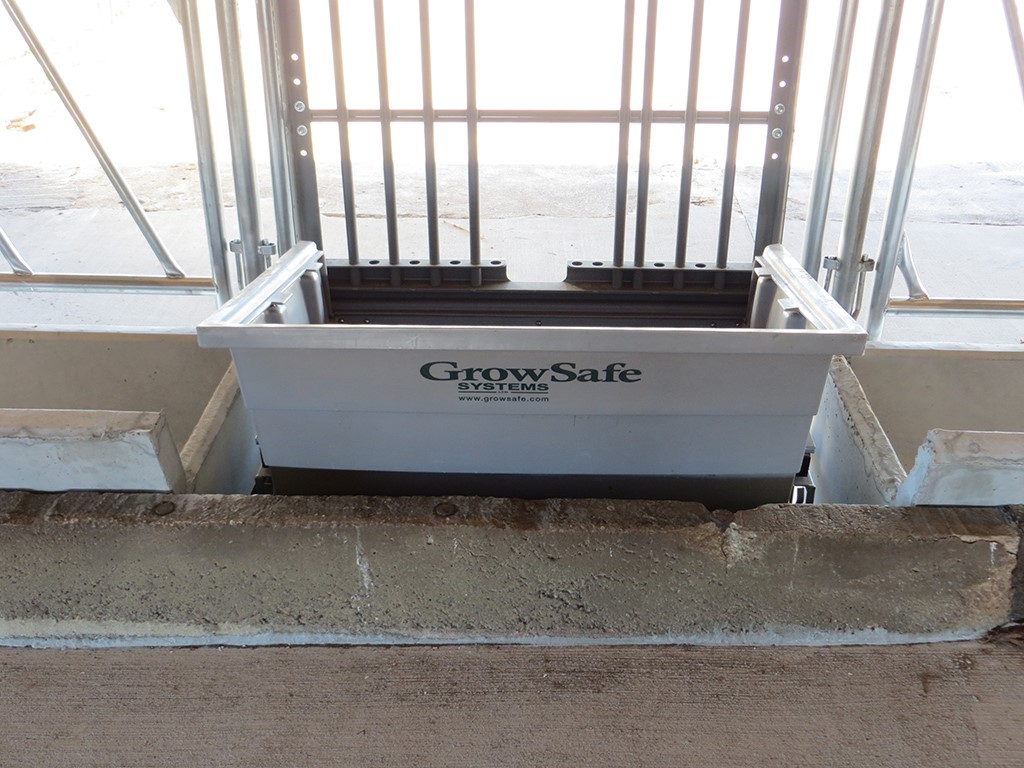
Funding Agency: USDA – NIFA
Funding Amount: $500,000
Start and End Dates: 2020-2023
Lead PI:
Phil Myer, University of Tennessee, Institute of Agriculture
List of Co-PIs and Institution:
- Jon Beever, University of Tennessee, Institute of Agriculture
- Brynn Voy, University of Tennessee, Institute of Agriculture
- Jim Wells (USDA-ARS),
- Larry Kuehn (USDA-ARS)
Diagnosis of bovine respiratory disease (BRD) in cattle is largely based upon visual observation of clinical signs. This can lead to inaccuracies and delayed discovery of disease which can delay treatment. The goal of this project was to utilize a UT-developed halter-based accelerometers and GPS units as well as commercially available accelerometers to capture activity in stocker cattle and pair those data with nasopharyngeal microbial and blood parameter data to get a full picture of BRD onset. Forty multi-origin stocker cattle managed on a commercial stocker operation in Tennessee were utilized and blood and nasopharyngeal samples were collected throughout the study to determine relationships between behavior and physiological parameters. Data obtained during this project will be beneficial in better understanding the temporal changes that occur in cattle throughout naturally occurring BRD.
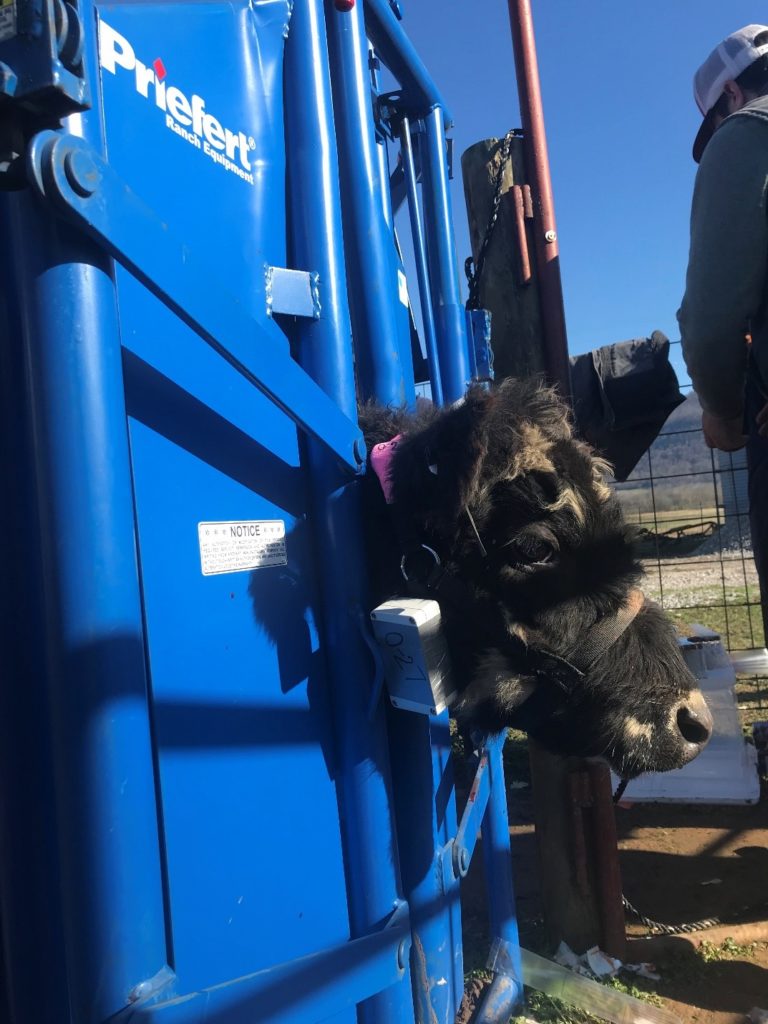
Funding Agency: UT CVM Center of Excellence in Livestock Diseases and Human Health
Funding Amount: $30,000.00
Start and End Dates: 01/2020-12/31/2021
Lead PI:
Liesel Schneider, University of Tennessee, Institute of Agriculture
List of Co-PIs and Institution:
- Phil Myer, University of Tennessee, Institute of Agriculture
- Marc Caldwell, University of Tennessee, Institute of Agriculture
- Maria Prado, University of Tennessee, Institute of Agriculture
- John Wilkerson, University of Tennessee, Institute of Agriculture
Airborne transmission is one of the mechanisms for disease spreading in poultry production. This funded project aims to explore the airborne transmission of poultry related pathogens through a series experiment and modeling activities. Specifically, researchers are evaluating samplers for collecting airborne pathogens, determining survivability of airborne and deposited pathogens under different environmental conditions, quantifying concentrations and emissions of airborne pathogens from commercial poultry farms, assessing regional impacts of pathogen dispersions from source poultry farms, and evaluating mitigation technologies on airborne transmission.
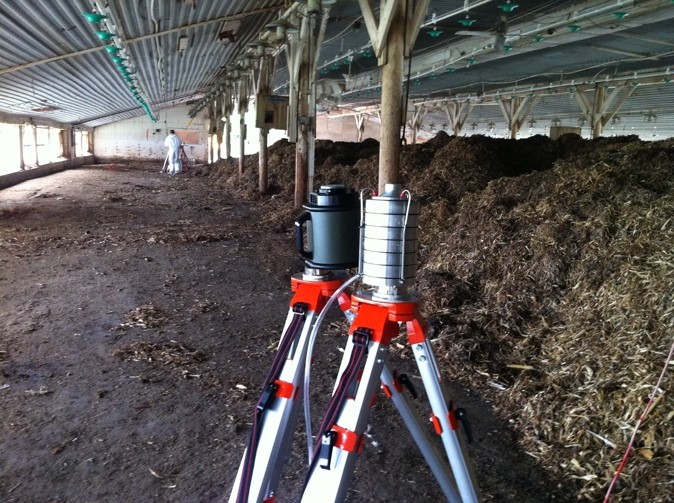
Funding Agency: USDA-ARS (Non-Assistance Cooperative Agreement)
Funding Amount: $164,900.00
Start and End Dates: 09/01/2020 – 09/30/2021
Lead PI:
Yang Zhao, University of Tennessee, Institute of Agriculture
Broiler welfare and behavior may be affected by growth rate. However, there is no scientific basis for linking broiler growth rate to bird welfare nor preparedness approach for reducing growth rates of standard broiler strains. The objectives of this project are to 1) determine growth rate reduction of two standard broiler strains through nutrition manipulation, and 2) evaluate broiler welfare and behavior as affected by growth rate and stocking density using objective measures by PLF technologies. This project is expected to extend knowledge of a nutrition-based solution for slowing growth rate of standard broiler strains, and interactions of bird welfare with growth rate and management. It will also exemplify objective approaches for broiler welfare and behavior assessments, and produce scientific and educational data to be distributed in public, industry, and professional communities.
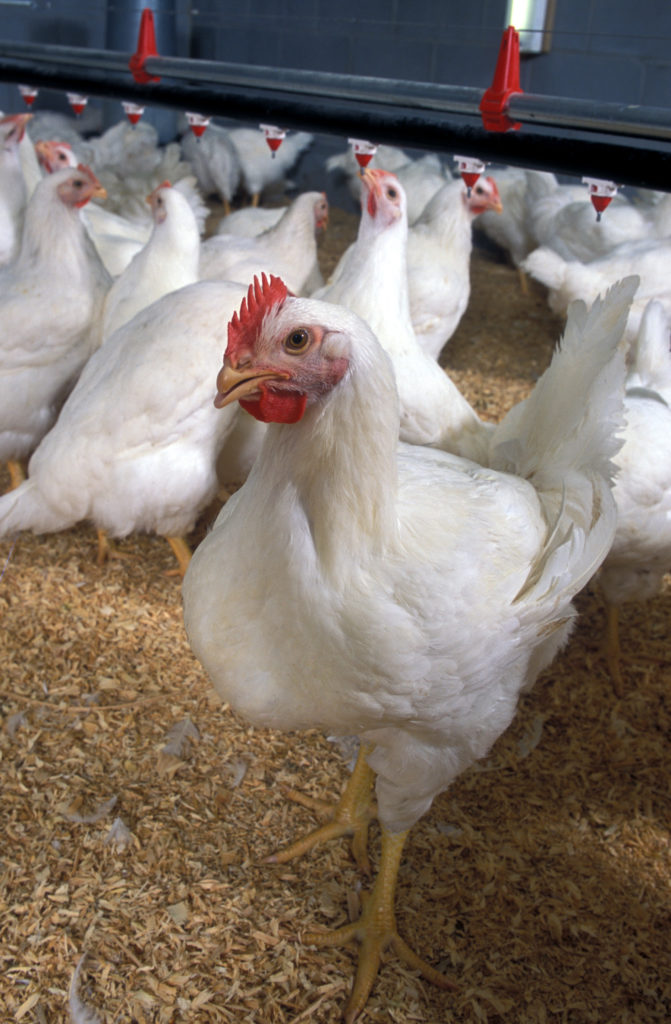
Funding Agency: US Poultry & Egg Association
Funding Amount: $123,937 ($61,959 transferred to UT)
Start and End Dates: 08/16/2019 – 03/31/2022
Lead PI:
Yang Zhao, University of Tennessee, Institute of Agriculture
List of Co-PIs and Institution:
- Dr. Wei Zhai, Poultry Science, MSU
- Dr. Joseph Purswell, USDA-ARS Poultry Research Unit
- Dr. Tom Tabler, Poultry Science, MSU
Many restaurant chains, retailers, and grocers in the US have announced transition to sourcing only cage-free (CF) eggs in the near future. One of the biggest challenges in CF housing systems is to reduce the floor eggs that represent approximately 0.5 – 5.0% of the daily egg production. The primary goal of this project is to investigate the effects of robot operation on discouraging hen’s floor laying behavior in CF housing, and to develop artificial intelligence algorithms and an automated system for floor egg detection and collection.
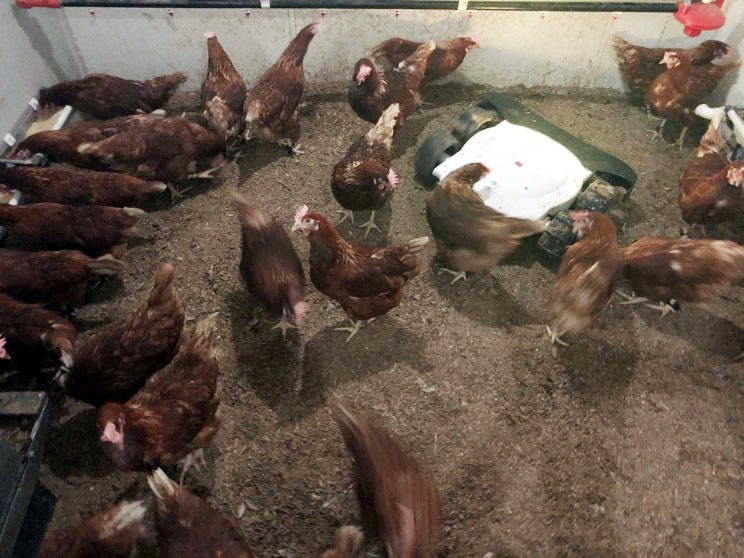
Funding Agency: Egg Industry Center
Funding Amount: $85,605 ($28,343 transferred to UT)
Start and End Dates: 07/01/2020 – 06/30/2021
Lead PI:
Yang Zhao, University of Tennessee, Institute of Agriculture
List of Co-PIs and Institution:
- Dr. Joseph L. Purswell, USDA-ARS Poultry Research Unit
- Dr. Wei Zhai, Poultry Science, Mississippi State University
- Dr. Qian Du, Electrical and Computer Engineering, Mississippi State University
- Dr. Hongwei Xin, UT AgResearch, The University of Tennessee
Good animal welfare is paramount to the dairy industry, including producers, processors,
distributors, and cooperatives. The development of a new, accurate, and remote welfare assessment benchmark using validated multi-variable precision dairy technologies (PDTs) has the potential to increase the sustainability of the dairy industry. PDTs allow for real-time, continuous recording of animal behavior and other animal-based outcomes at the individual animal level. Before these technologies can be useful in assessing animal welfare, predictive models and validations must first be done. Additionally, although technology may be useful to identify animal welfare concerns on farm, dairy producers must be willing to adopt these technologies, see value and trust in these tools, and interpret the data. Concurrently, there is a risk that investment in and adoption of novel technologies may be futile if these technologies are ultimately rejected by society. Therefore, the public must be engaged to establish which aspects of these technologies may generate social acceptance or concern. Thus, our proposed integrated research and extension project aims to bridge the use of PDTs with the social aspects of animal welfare. We will develop models and validate the use of multiple, integrated technologies to predict animal welfare assessment outcomes that can be monitored remotely while simultaneously engaging dairy producers and the public in two-way conversations about the role of these technologies on-farm. Our multidisciplinary project will integrate scientific assessments of animal welfare, artificial intelligence, machine learning, dairy production knowledge, and social science to provide practical recommendations for the sustainable use of PDT on-farm.
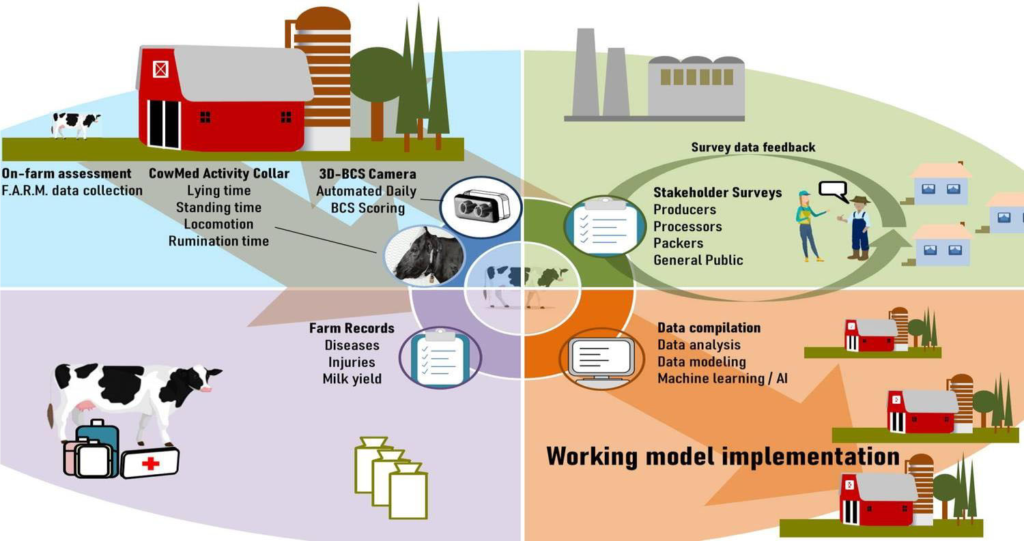
Funding Agency: NIFA IDEAS Grant
Funding Amount: $999,506.00
Start and End Dates: 01/01/2021 to 12/31/2024
Lead PI:
Joao Costa, University of Kentucky
List of Co-PIs and Institution:
- Liz Eckelkamp, University of Tennessee, Institute of Agriculture
- Susan Schexnayder, University of Tennessee, Institute of Agriculture
- Simone Silvestri, University of Kentucky
- Katherine Proudfoot, University of Prince Edward Island
- Beth Ventura, University of Minnesota
Although electronic monitoring systems have been used effectively in the dairy industry, these systems have not been implemented in typical beef cow-calf systems in the US. Use of electronic monitoring systems in the beef industry is limited by the extensive nature of the industry (animals managed on pasture versus stall barns), limited profit margins. In this series of projects, we are working with an CowManager BV to adjust their technology for adaptability to beef cattle management and determine the breakeven cost of implementation for beef cattle producers.
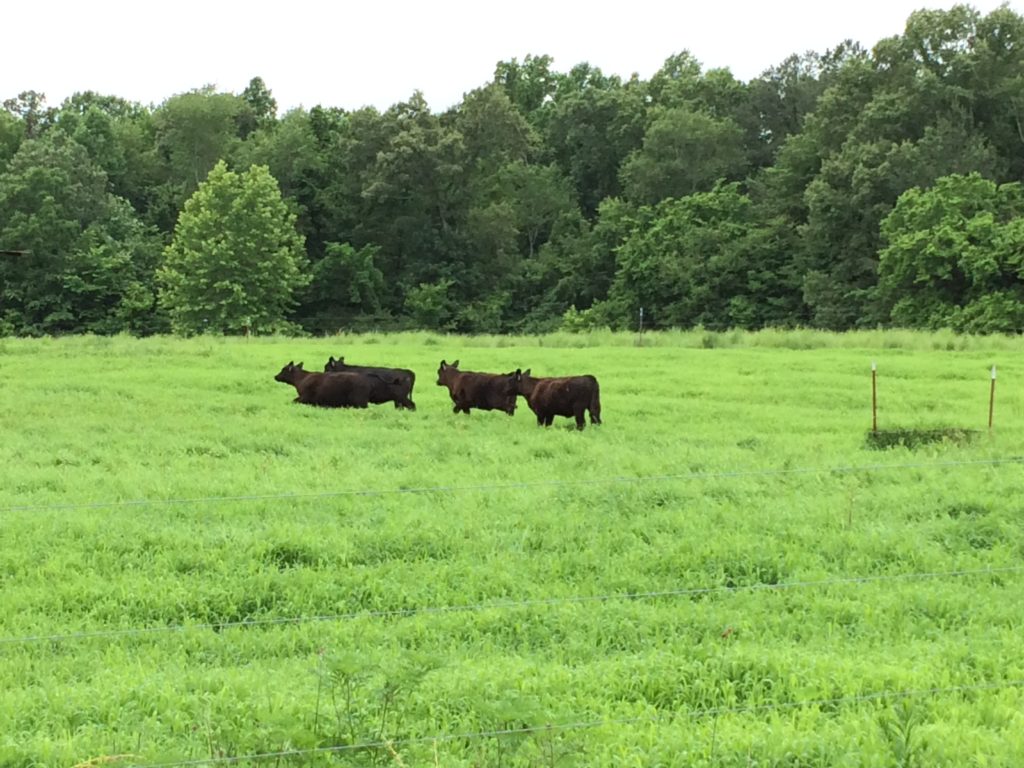
Funding Agency: Tennessee Livestock Network and Industry sponsor (CowManager BV)
Funding Amount: $23,859 and In-kind donation of technology valued at $29,000; respectively
Start and End Dates: 2011 – ongoing
Lead PI:
Justin Rhinehart, University of Tennessee, Institute of Agriculture
List of Co-PIs and Institution:
- Les Anderson (University of Kentucky)
- Jason Duggin (University of Georgia)
At study completion, we expect to have determined (a) the efficacy of using real-time weight monitoring for identifying cyclicity and estrus behavior (Obj. 1), (b) the ability to identify illness by utilizing real-time weight monitoring (Obj. 2), (c) the benefits of more precise supplementation due to real-time weight monitoring (Obj. 3), and (d) a hands on learning environment for producers, students, industry members, and extension agents on PLF beef production (Obj. 4). These outcomes are directly related to the average beef producer’s bottom line and would have immediate and direct impacts in the US beef industry by showcasing how PLF can be utilized by all types of producers in beef production.
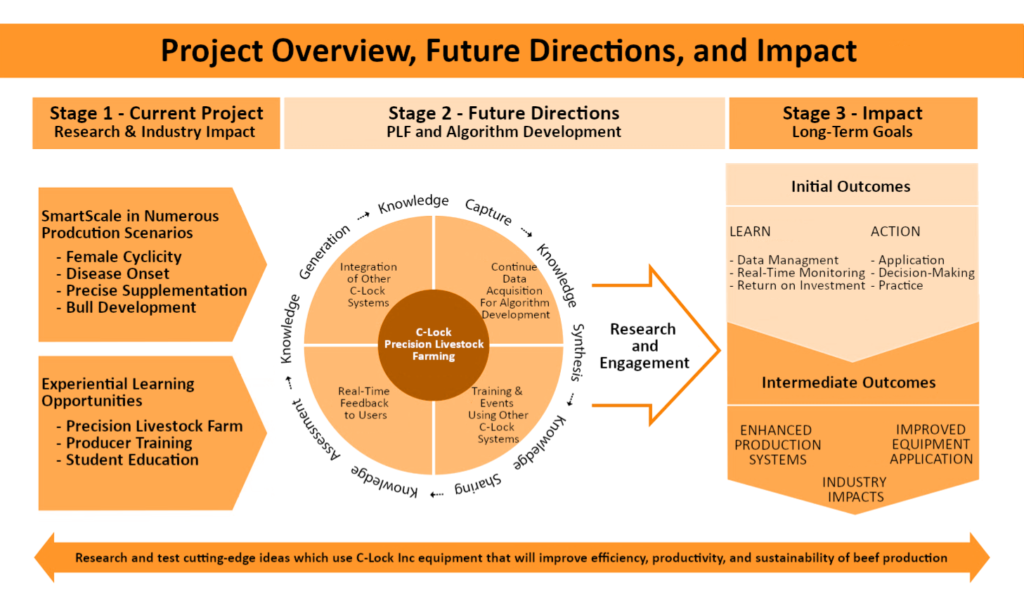
Funding Agency: C-Lock
Funding Amount: $58,160
Start and End Dates: December 2020 thru May 2022
Lead PI:
Kyle McLean, University of Tennessee, Institute of Agriculture
List of Co-PIs and Institution
- Justin Rhinehart, University of Tennessee, Institute of Agriculture
- Robert Burns. University of Tennessee, Institute of Agriculture
- Liesel Schneider, University of Tennessee, Institute of Agriculture
- Phillip Myer, University of Tennessee, Institute of Agriculture
- Christopher Boyer, University of Tennessee, Institute of Agriculture
To fully utilize the paddock system at MTREC we are installing a Super SmartFeed™ and 4 SmartFeed™ Pro units. This will give us the ability to integrate both feeding and continuous weight monitoring (external funding already obtained) precision livestock farming technologies into beef research. The Super SmartFeed™ System is an automated cattle feeder used to provide precise supplement levels for cattle on pasture. This feeder has a 6000 lbs. bin capacity and the ability to hold up to 4 different feedstuffs (1500 lbs each) from the same unit. In addition this unit can creep feed calves and supplement cows at the same time while providing exact amounts of supplement to each individual animal. Intake rate is monitored and adjusted for individual animals to ensure proper feeding with limited carryover between animals. The Super SmartFeed™ is also highway ready, therefore, it is very mobile. The SmartFeed™ Pro is an automated cattle feeder typically used for any size and age of cattle that can control and limit feed intake. The major differences from Super SmartFeed™ are the SmartFeed™ Pro is the Pro is has a smaller feed holding capacity and is an individual bunk vs 4 intake areas. The combinations of these two types of smart feeders will maximize utilization of the 8 Smartscales (funding confirmed from C-Lock) for that will be used in the paddock system at MTREC.
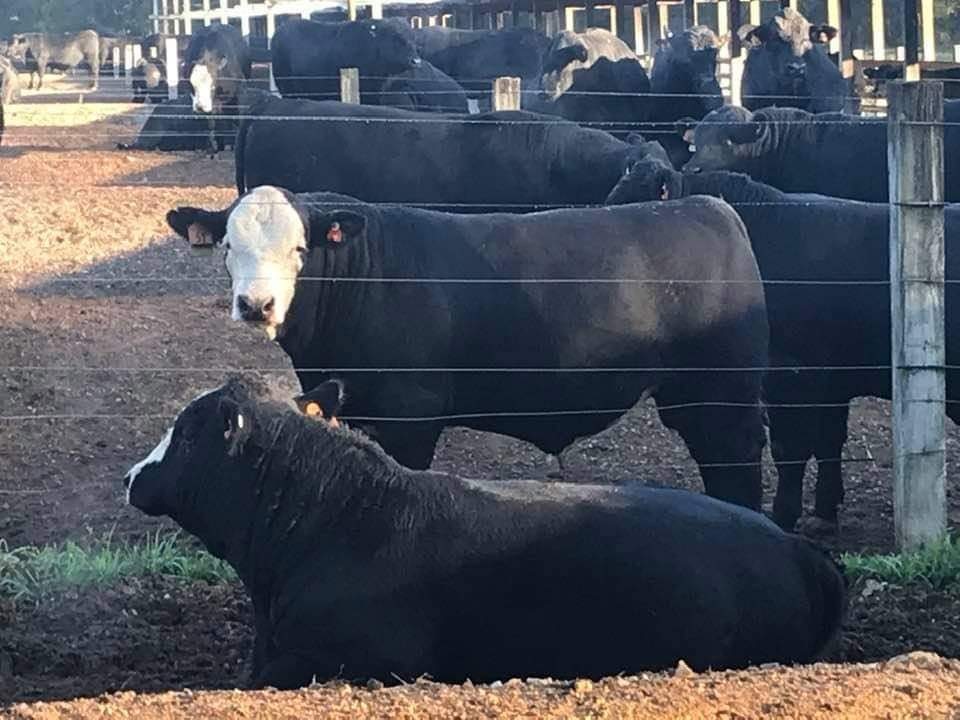
Funding Agency: UT AgResearch
Funding Amount: $130,656
Start and End Dates: May 2021 thru May 2023
Lead PI:
Kyle McLean, University of Tennessee, Institute of Agriculture
List of Co-PIs and Institution
- Justin Rhinehart, University of Tennessee, Institute of Agriculture
- Robert Burns, University of Tennessee, Institute of Agriculture
- Liesel Schneider, University of Tennessee, Institute of Agriculture
- Phillip Myer, University of Tennessee, Institute of Agriculture
- Christopher Boyer, University of Tennessee, Institute of Agriculture
- Renata Nave Oakes, University of Tennessee, Institute of Agriculture
- Hao Gan, University of Tennessee, Institute of Agriculture